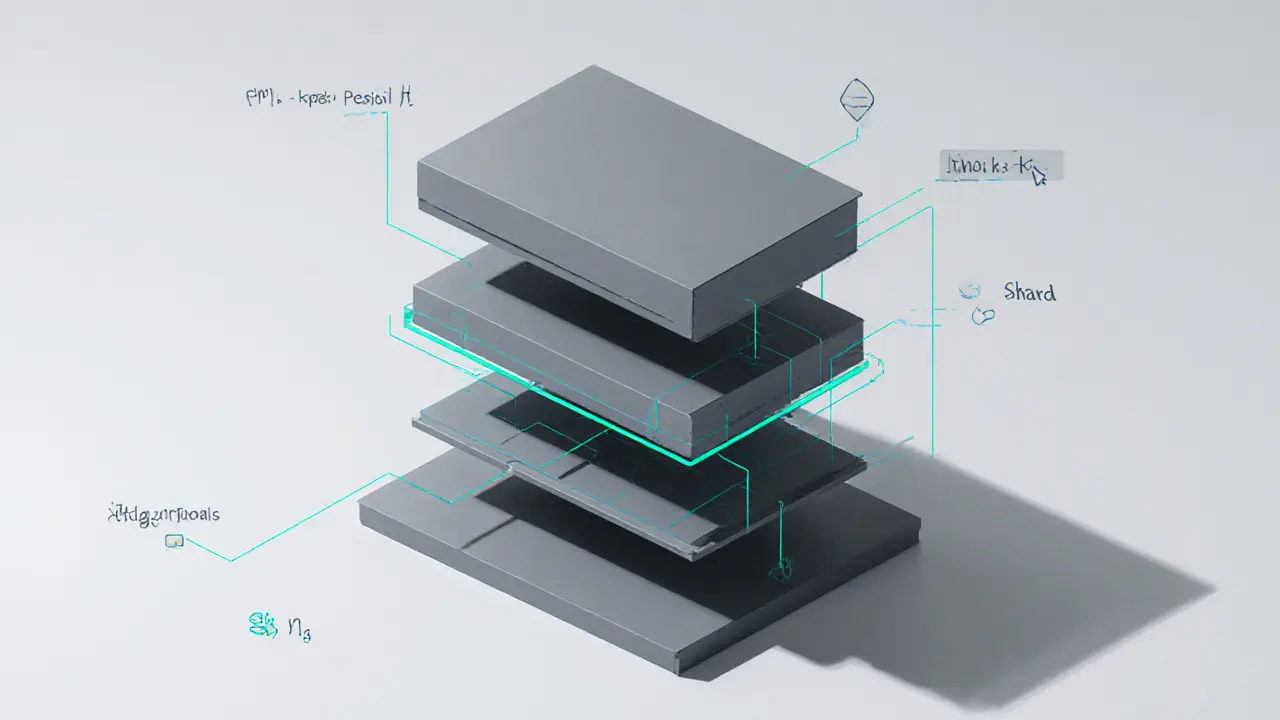Ethereum Gas Fee Calculator
Estimate Your Transaction Cost
Enter transaction details to calculate estimated gas fees based on current network conditions.
Your Estimated Transaction Cost
Transaction Details
Select transaction type and enter values to see details.
Network Comparison Table
Compare gas prices across different Ethereum networks.
| Network | Avg. Gas Price (gwei) | Typical Cost (USD) | Security |
|---|---|---|---|
| Ethereum Mainnet | 2.7 | $0.40 | Full on-chain |
| Arbitrum | 0.3 | $0.05 | Optimistic Rollup |
| Optimism | 0.25 | $0.04 | Optimistic Rollup |
| Polygon | 0.1 | $0.02 | Sidechain |
Ever tried swapping a token on Ethereum and saw your wallet balance drop by more than the trade amount? That extra bite is the dreaded Ethereum gas fees. In 2025 the story has flipped - fees that once ran double‑digit dollars now sit under a buck for most users. This article breaks down why gas fees get pricey, what the network has done to tame them, and how you can keep costs low today.
TL;DR - Quick Takeaways
- Gas fees are the payment for computational work done by validators (formerly miners) who secure the Ethereum network.
- Fees spike when many users compete for block space; simple transfers need ~21,000 gas units while complex DeFi actions can consume >300,000.
- The 2021 EIP-1559 introduced a base‑fee model that automatically adjusts to demand and burns part of the fee.
- The 2024‑2025 Dencun upgrade reduced average gas price from ~72gwei to ~2.7gwei, a 95% drop.
- Using Layer 2 scaling solutions like Arbitrum, Optimism, or Polygon can slash fees another 90‑99%.
What Exactly Is a Gas Fee?
On Ethereum a public, permissionless blockchain launched in 2015, every operation consumes computational resources. The network measures that work in gas a unit that quantifies how much CPU and storage a transaction requires. Users pay for gas in gwei (1gwei = 0.000000001ETH), the smallest denomination of Ether.
The total fee you see = gas‑used × gas‑price (in gwei). If you set a higher gas‑price, validators prioritize your transaction, getting it into the next block faster.
Why Do Fees Surge?
Ethereum’s fee market is an auction. When demand spikes - for example, a popular token launch, a trending NFT drop, or a market rally - many wallets try to write to the chain at once. The limited block space (about 30million gas per block) forces users to outbid each other, pushing the gas‑price up.
Transaction complexity also matters. A plain ETH transfer uses roughly 21,000 gas units. Swapping on Uniswap or providing liquidity can easily exceed 200,000 units because the smart contract must execute multiple steps (price calculation, token transfers, state updates). The more logic, the higher the gas‑used, and the higher the fee.
Historical data shows the effect clearly: on February192025 a single DeFi swap cost $50 when a viral token launch flooded the mempool, even though the average fee that day was under $1.
The EIP‑1559 Revolution
Before August2021, users manually set a max fee and a tip, and miners chose the highest bids. The EIP‑1559 replaced that auction with a dual‑component model:
- Base fee - automatically adjusted every block based on demand; this fee is burned (removed from circulation), creating a deflationary effect on ETH supply.
- Priority fee (tip) - optional extra paid directly to validators for faster inclusion.
This mechanism smooths fee volatility but does not eliminate spikes entirely; when demand outpaces the base‑fee algorithm, the base fee still climbs.

Dencun Upgrade: The Game‑Changer
The most dramatic fee drop came with the Dencun upgrade (named after its data availability and execution layers) rolled out in late 2024 and finalized in early 2025. Key improvements:
- Introduction of proto‑danksharding - a cheaper way to store calldata, reducing costs for rollup batches.
- Optimized gas metering for calldata and transaction data, cutting the gas per byte by up to 80%.
- Enhanced block size flexibility, allowing more transactions per block during high‑load periods.
Metrics after Dencun:
- Average gas price fell from ~72gwei (2024) to ~2.7gwei (2025), a 96% reduction.
- Typical swap fee dropped from $86 to $0.39.
- Daily total fees declined from $23million to $7.5million.
These numbers show that Ethereum is no longer a “$100‑swap” platform for most everyday users.
Layer2 Scaling Solutions: Off‑Chain Heroes
Even with Dencun, the base layer can still get congested during hype events. That’s where Layer2 scaling solutions process transactions off‑chain and settle batches on Ethereum shine. Below is a quick comparison.
| Network | Avg. Gas Price (gwei) | Typical Transaction Cost (USD) | Security Model |
|---|---|---|---|
| Ethereum Mainnet | 2.7 | ~$0.40 (simple swap) | Full on‑chain security |
| Arbitrum | 0.3 | ~$0.05 | Optimistic rollup, relies on Ethereum for dispute resolution |
| Optimism | 0.25 | ~$0.04 | Optimistic rollup, fast finality |
| Polygon | 0.1 | ~$0.02 | Sidechain with separate validator set, bridges to Ethereum |
By moving the heavy lifting off‑chain, these networks keep fees in the pennies range while still inheriting Ethereum’s security guarantees.
Practical Tips to Keep Your Fees Low
- Check the gas meter. Use tools like ETH Gas Station or GasNow to see real‑time price estimates.
- Time your transactions. Fees are typically 25‑40% cheaper on weekends or in early morning UTC when global activity dips.
- Prefer Layer2. Most DeFi platforms (Uniswap V3, Aave, Curve) have L2 versions. Bridge your assets once and trade repeatedly on L2 to avoid repeated bridging costs.
- Set a reasonable max‑priority fee. For non‑urgent moves, a 0.5‑1gwei tip usually lands you in the next block without overpaying.
- Batch transactions. Some wallets let you combine multiple actions (e.g., approve + swap) into a single transaction, saving up to 30% on gas.
Most users master these habits within 1‑2 weeks, according to community surveys on Reddit’s r/ethereum.
Future Outlook: Will Fees Stay Low?
Analysts expect average fees to hover below $1 for routine swaps for the foreseeable future, thanks to two forces:
- Continued refinement of the base‑fee algorithm (proposals to smooth spikes even more).
- Broader adoption of Layer2 scaling solutions, especially as bridges become more user‑friendly and gas‑less rollups emerge.
However, periodic spikes will persist whenever a wildly popular dApp or token launch overwhelms even L2 capacities. The community’s response-better fee‑prediction tools, auto‑batchers, and fee‑hedging services-will be key to keeping the user experience smooth.
Quick Reference Checklist
- Monitor gas price (gwei) before sending.
- Schedule non‑urgent ops during low‑traffic windows.
- Use an L2 for frequent trades or NFTs.
- Set a modest priority fee; increase only for urgent trades.
- Consider batching or using meta‑transactions where supported.

Frequently Asked Questions
Why do Ethereum fees sometimes exceed $100?
When a popular event (token launch, NFT drop, or market panic) fills the mempool, users compete for the limited block space. The base‑fee rises sharply, and those willing to pay a high priority tip can trigger fees that briefly top $100 for complex swaps.
Is the Dencun upgrade permanent?
Yes. Dencun’s changes to calldata pricing and block size flexibility are part of the core protocol. Future upgrades will build on it, but the fee‑reduction mechanisms are now baked into Ethereum’s consensus rules.
Can I avoid fees completely?
No. Every transaction requires gas to prevent spam and reward validators. However, using Layer2, timing your swaps, and setting low priority fees can bring the cost down to mere pennies.
How does gas burning affect ETH price?
The base fee is permanently removed from circulation, reducing ETH’s supply over time. This deflationary pressure has historically contributed to upward price pressure, especially when network activity is high.
Which Layer2 should I choose?
It depends on the dApp you use. Uniswap, Aave, and Curve all have native Arbitrum and Optimism integrations. Polygon is great for NFTs. Check the dApp’s documentation for the recommended L2.

